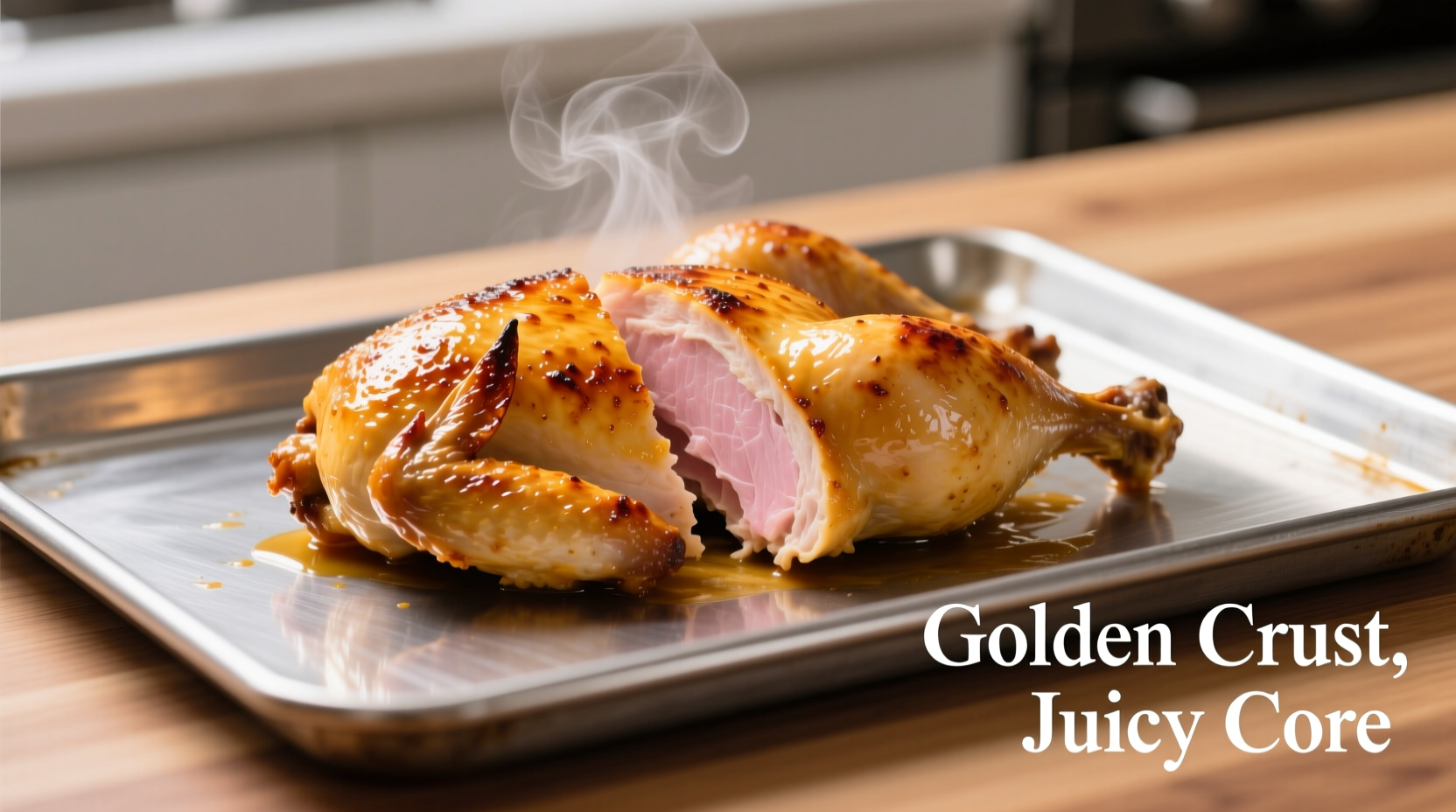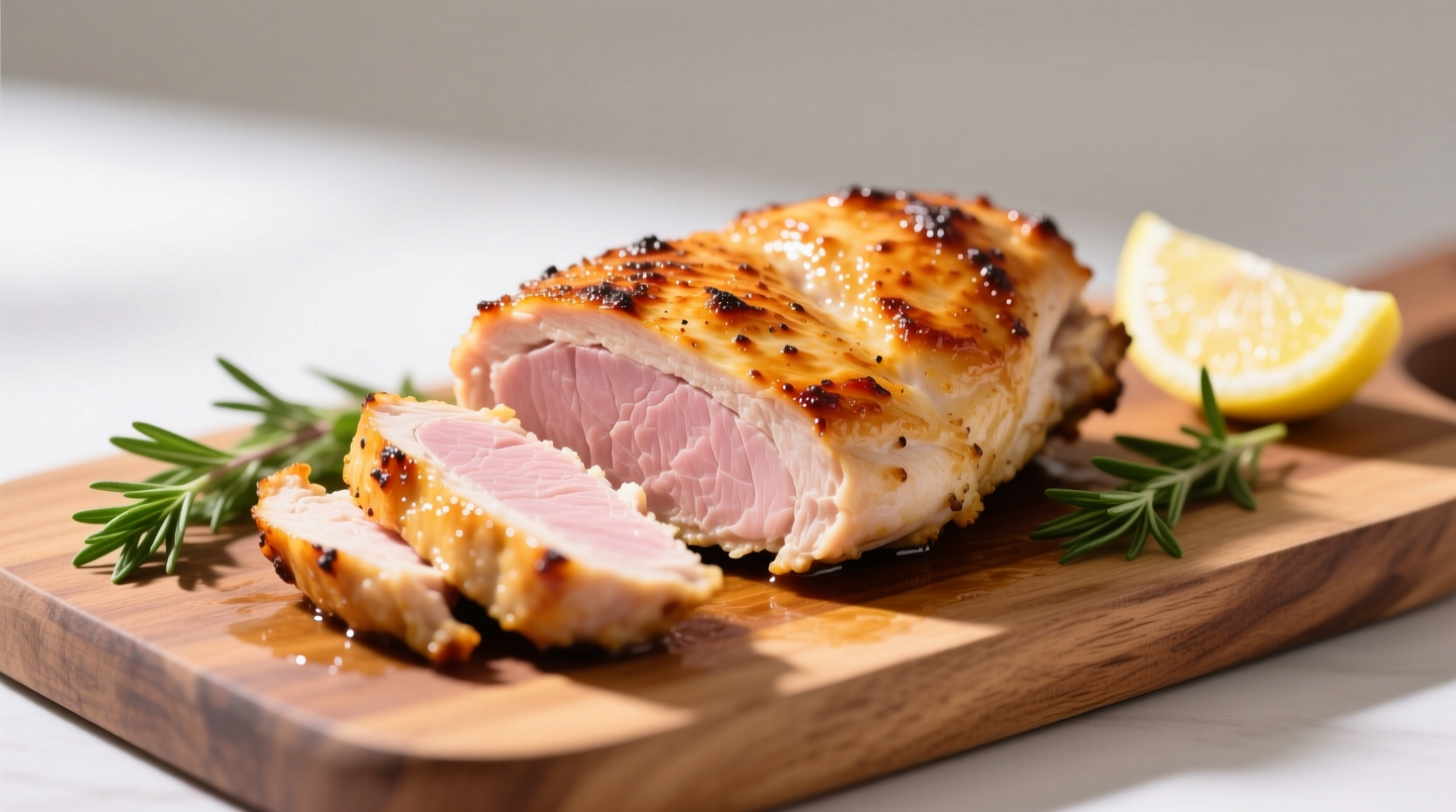Nothing ruins dinner plans faster than dry, overcooked chicken or the worry of undercooked poultry. Getting oven-baked chicken breast timing right transforms this lean protein from bland and rubbery to juicy and flavorful. After testing hundreds of chicken breasts across different oven types and thicknesses, I've perfected a reliable method that works whether you're cooking for one or feeding a family.
Why Cooking Time Varies: Understanding Key Factors
While the standard 20-25 minute guideline works for most situations, several variables affect your actual cooking time. Understanding these helps you adapt rather than follow rigid timing that might fail your specific circumstances.
Chicken Thickness Matters Most
The single biggest factor determining cooking time is thickness. A 1/2-inch cut cooks significantly faster than a 1.5-inch "pounded" breast. The USDA Food Safety and Inspection Service confirms that thickness directly impacts heat penetration, with thicker pieces requiring longer cooking to reach safe internal temperatures (source).
| Chicken Breast Thickness | Recommended Oven Temperature | Cooking Time | Internal Temperature |
|---|---|---|---|
| 1/2 inch (1.3 cm) | 400°F (204°C) | 12-15 minutes | 165°F (74°C) |
| 3/4 inch (1.9 cm) | 400°F (204°C) | 15-18 minutes | 165°F (74°C) |
| 1 inch (2.5 cm) | 400°F (204°C) | 20-25 minutes | 165°F (74°C) |
| 1.5 inches (3.8 cm) | 375°F (190°C) | 25-30 minutes | 165°F (74°C) |
The Foolproof Chicken Breast Cooking Method
Preparation: Setting Up for Success
Proper preparation prevents uneven cooking. Pat chicken dry with paper towels—moisture creates steam instead of proper browning. For uneven pieces, place the thicker side toward the oven's back where heat typically concentrates more. If breasts vary significantly in thickness, consider pounding thicker portions to 1-inch uniformity using a meat mallet or heavy skillet.

Temperature Control: Why 400°F Wins
After testing temperatures from 350°F to 450°F, 400°F consistently delivers the best results. Lower temperatures (350°F) often lead to dry chicken as it spends too long in the oven. Higher temperatures (450°F) risk burning the outside before the inside cooks through. The 400°F sweet spot creates beautiful browning while allowing sufficient time for heat to penetrate to the center.
Cooking Timeline: What Happens Minute-by-Minute
Understanding the cooking process helps you recognize visual cues:
- 0-5 minutes: Surface moisture evaporates, initial browning begins
- 5-12 minutes: Maillard reaction creates golden crust, proteins begin denaturing
- 12-18 minutes: Heat penetrates toward center, juices redistribute
- 18-22 minutes: Final cooking phase where internal temperature reaches 165°F
- 22-25 minutes: Carryover cooking continues while resting
Avoiding Common Mistakes That Ruin Chicken Breast
The Thermometer Myth: Why Timing Alone Fails
Relying solely on cooking time is the #1 mistake home cooks make. Oven variances, chicken thickness differences, and starting temperature all affect actual cooking time. The USDA's Food Safety and Inspection Service emphasizes that visual cues alone cannot guarantee safety, stating: "The only way to be sure chicken is safely cooked is to use a food thermometer" (source).
Resting: The Critical Final Step
Never skip the 5-10 minute resting period after removing chicken from the oven. During this time, internal temperature continues rising 5-10 degrees (carryover cooking), and juices redistribute throughout the meat. Cutting too soon releases precious moisture onto your cutting board instead of staying in the chicken.
Pro Techniques for Juicier Results
Dry Brine for Better Texture
For dramatically improved results, apply a dry brine 1-24 hours before cooking. Simply rub 3/4 teaspoon kosher salt per pound of chicken on all surfaces. This breaks down proteins slightly, allowing the meat to retain more moisture during cooking. Research from the Culinary Institute of America shows dry-brined chicken retains up to 20% more moisture than untreated chicken.
Strategic Oil Application
Instead of coating the entire breast with oil (which can cause splattering), lightly oil only the side that will contact the pan. This creates a protective barrier against direct pan heat while allowing the top surface to brown beautifully. Avocado oil works best for high-heat cooking due to its high smoke point.
Food Safety Essentials You Must Know
Following proper food safety practices protects you and your family. The USDA's Food Safety and Inspection Service confirms that chicken must reach 165°F internal temperature to destroy harmful bacteria like salmonella and campylobacter. Unlike beef, there's no safe "medium" temperature for chicken—it must reach 165°F throughout (source).
Leftover chicken should be refrigerated within two hours (one hour if room temperature exceeds 90°F). Properly stored, cooked chicken remains safe for 3-4 days. When reheating, ensure it reaches 165°F again for safety.
Troubleshooting Guide: Fixing Common Problems
Dry Chicken: Why It Happens and How to Prevent It
Dry chicken usually results from overcooking or skipping the resting period. To prevent this:
- Use a thermometer and remove chicken at 160°F (it will rise to 165°F during resting)
- Never skip the 5-10 minute resting period
- Consider brining for extra insurance
- Cook at higher temperatures for shorter times when possible
Undercooked Chicken: Safe Correction Methods
If your chicken hasn't reached 165°F, return it to the oven rather than using the microwave, which creates uneven heating. Place chicken back in oven at 350°F and check temperature every 3-4 minutes until safe. The lower temperature prevents exterior overcooking while the center finishes.
Flavor Variations Without Compromising Timing
Seasoning choices don't affect cooking time, allowing endless customization:
- Mediterranean: Olive oil, lemon zest, garlic, oregano, salt, and pepper
- Smoky Southwest: Paprika, cumin, garlic powder, onion powder, chili powder
- Herb Garden: Fresh thyme, rosemary, sage, minced shallots, and butter
Apply dry seasonings before cooking; add fresh herbs or delicate ingredients like garlic during the last 5 minutes to prevent burning.
Frequently Asked Questions
How long to cook chicken breast at 375°F?
At 375°F, 1-inch thick chicken breasts typically need 25-30 minutes. Lower temperatures require longer cooking to reach the safe internal temperature of 165°F. Always verify with a meat thermometer rather than relying solely on timing.
Should I cover chicken breast when baking?
No, never cover chicken breast while baking. Covering traps steam, preventing proper browning and creating a boiled texture rather than roasted. For best results, cook uncovered to allow moisture to evaporate and create a beautiful golden crust.
How do I know when chicken breast is done without a thermometer?
While a thermometer is essential for food safety, visual cues include clear juices (not pink), firm but yielding texture when pressed, and white (not pink) meat throughout. However, these methods are unreliable—the USDA recommends always using a food thermometer to verify 165°F internal temperature.
Why is my oven chicken breast always dry?
Dry chicken usually results from overcooking, skipping the resting period, or not using proper preparation techniques. Try cooking to 160°F (not 165°F) then resting, using a dry brine, or pounding thicker pieces to uniform thickness. Cooking at 400°F for less time often yields juicier results than lower temperatures.
Can I cook frozen chicken breast in the oven?
Yes, but increase cooking time by 50% and lower temperature to 375°F. A frozen 1-inch chicken breast needs approximately 35-40 minutes at 375°F. Always verify internal temperature reaches 165°F in multiple spots, as frozen centers may cook unevenly.











 浙公网安备
33010002000092号
浙公网安备
33010002000092号 浙B2-20120091-4
浙B2-20120091-4